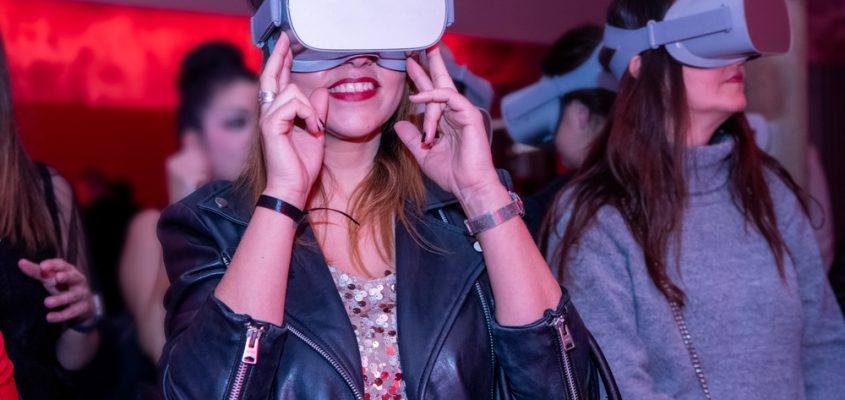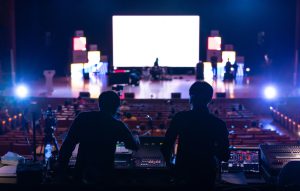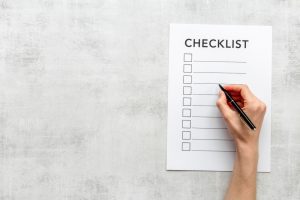8 Experiential Marketing Examples from Market Leaders

Businesses who regularly show at exhibitions and trade shows know that among potentially hundreds of stands, it takes more to grab attention. That’s why we’ve rounded up 20 top experiential marketing examples to get your creative juices flowing.
While experiential marketing events can come with a price tag, exhibitors who get it right reap the rewards of positive brand awareness and connection with their target audience. If this is something that appeals to you – keep reading.
Let’s explore how some leading brands created memorable activations that drove engagement.
Interactive Product Demonstrations
Don’t forget that interacting with a user product through a demo is so much more engaging than simply looking at it. experiential marketing examples
When Microsoft launched their HoloLens technology at major tech exhibitions, they transformed their exhibition space into an interactive demonstration area where visitors could experience virtual reality firsthand.
Just like Microsoft, your brand could bring in crowds and media coverage by allowing your products to be used and tested live at an exhibition.
Augmented Reality Integration
Ever considered investing in augmented reality as a tech activation? IKEA’s Place AR app launch turned its exhibition stand into an interactive home design studio. Visitors could virtually place furniture in their space, seeing how it would look IRL within the app.
IKEA claimed this interactive exhibition style led to significant app adoption after the event. This helped them drive adoption of their AR shopping tools as well as cemented their reputation as a digital innovation leader in retail.
Digital Storytelling Walls
Siemens brought their Smart City concept to life with massive interactive LED walls. As visitors approached different sections, they could explore real-time urban development data through touchscreen interfaces.
The visual storytelling approach turned abstract concepts into something more tangible that sparked natural conversations.
Virtual Reality Experiences
In the confines of an exhibition hall, it’s not always easy to put your attendees into the mindset of where your product will be used, especially – like our next experiential marketing example – when it’s meant for outdoor adventuring.
North Face introduced a left-field solution for this problem. They brought Yosemite National Park to life through immersive VR at their retail locations. Visitors strapped on headsets to experience the thrill of climbing while testing actual climbing gear in-store.
Encouraging an aspirational sense of where they could use the gear in real life was a winning formula.
Sensory Experiences
Bombay Sapphire’s ‘The Grand Journey’ took traditional gin tasting and upped the ante with an immersive theatre experience for all 5 senses.
Instead of customers simply tasting the product, like in a traditional product sampling, the activation engaged each sense. Here’s how:
Taste: Mixologists crafted cocktails that highlighted individual botanicals.
Smell: Themed scents were pumped into different zones, from juniper forests to spice markets.
Touch: Textured walls featured embedded raw ingredients for visitors to touch.
Sound: Location-specific audio transported guests from Asian spice markets to Moroccan souks.
Sight: Theatrical lighting and video content shifted throughout the journey, matching each botanical’s origin to set the scene.
The experiential experience gained widespread industry recognition for reinventing traditional product sampling.
Competitive Gaming Zones
How do you showcase impressive processing power without just showing boring technical specs? Intel’s eSports Arena turned their exhibition space into a tournament venue. The competitive gaming demonstrated the product capabilities through an entertaining spectacle that kept visitors coming back for more.
Product USP Testing
Where possible, show customers a USP instead of telling them. Our next experiential marketing example is the perfect case of a brand putting this into action.
In 2018, at the Mobile World Congress trade show, Samsung demonstrated the durability of its Galaxy S9 smartphone by dropping it repeatedly onto a hard surface in front of attendees. The rep would purposefully drop the phone from shoulder height onto a hard floor, demonstrating that the screen was still intact.
Free Professional Photo Booths
One of the most famous and well-known experiential marketing examples to date was masterminded by LinkedIn at the Cannes Lions Festival.
Here, they set up a mini photography studio to provide attendees with free professional headshot photos. As having a headshot is a key part of the professional LinkedIn experience, this offered a useful freebie that tied memorably into their service. The activation generated substantial social media buzz while providing a valuable service to attendees.
Giving away a service or product that clearly links to your brand is a smart way of creating a positive experience, especially if you don’t sell a tangible thing that you can see or touch. Consider how you might do this the next time you’re pondering how to optimise your venue space.
Why Do These Activations Work?
You might not realise it, but there’s psychology at work behind most of these attention-grabbing experiential events. They tap into a fundamental piece of human psychology: the principle of reciprocity.
In other words, when brands offer something – whether it’s LinkedIn’s professional headshots or Bombay Sapphire’s sensory journey – they trigger our natural instinct to give something back.
This explains why experiential marketing examples like these convert casual visitors into quality leads more effectively than passive displays.
Your activation doesn’t need to be enormously expensive to tap into this principle. Even simple things like offering personalised advice, interactive demos, or hands-on product testing can create that same sense of reciprocity. The key is to brainstorm creative ideas for your exhibition stand that give a novel and valuable experience to visitors.
Make Your Exhibition Presence Count
If you’re planning bold new moves for your exhibition stand or live event, don’t go it alone. Our innovative sensor technology can help you understand exactly which activations are driving engagement and footfall.
We know investing in analytics technology is a big decision. That’s why our tracking sensors are available to rent for individual events. Our small but hugely powerful units are designed to be portable, meaning they can be quickly transported and easily set up.
That way you can get valuable metrics about your exhibition performance with minimal faff.
Get in touch with the experienced team at Exposure Analytics to talk through your needs and arrange a demo.


